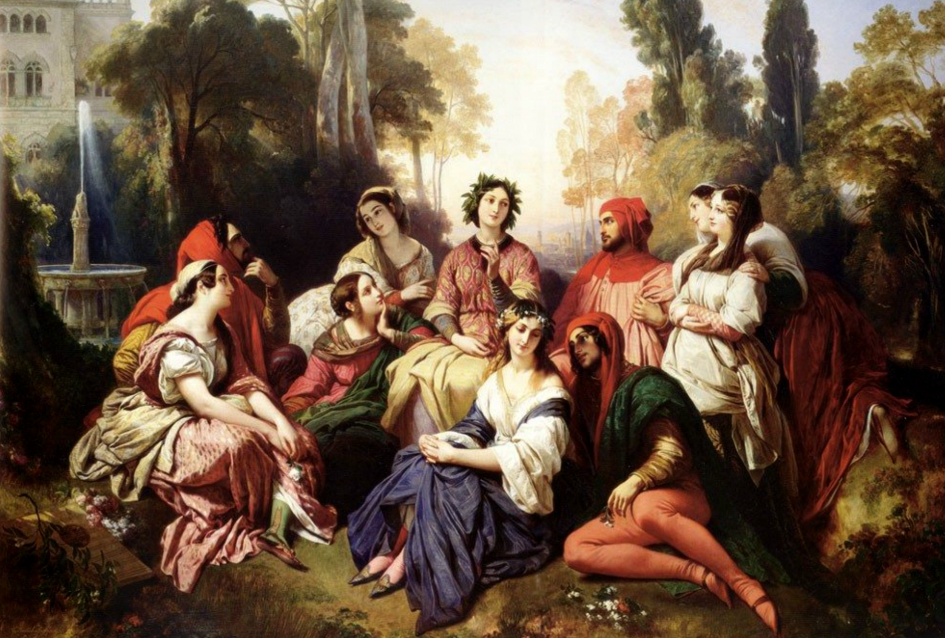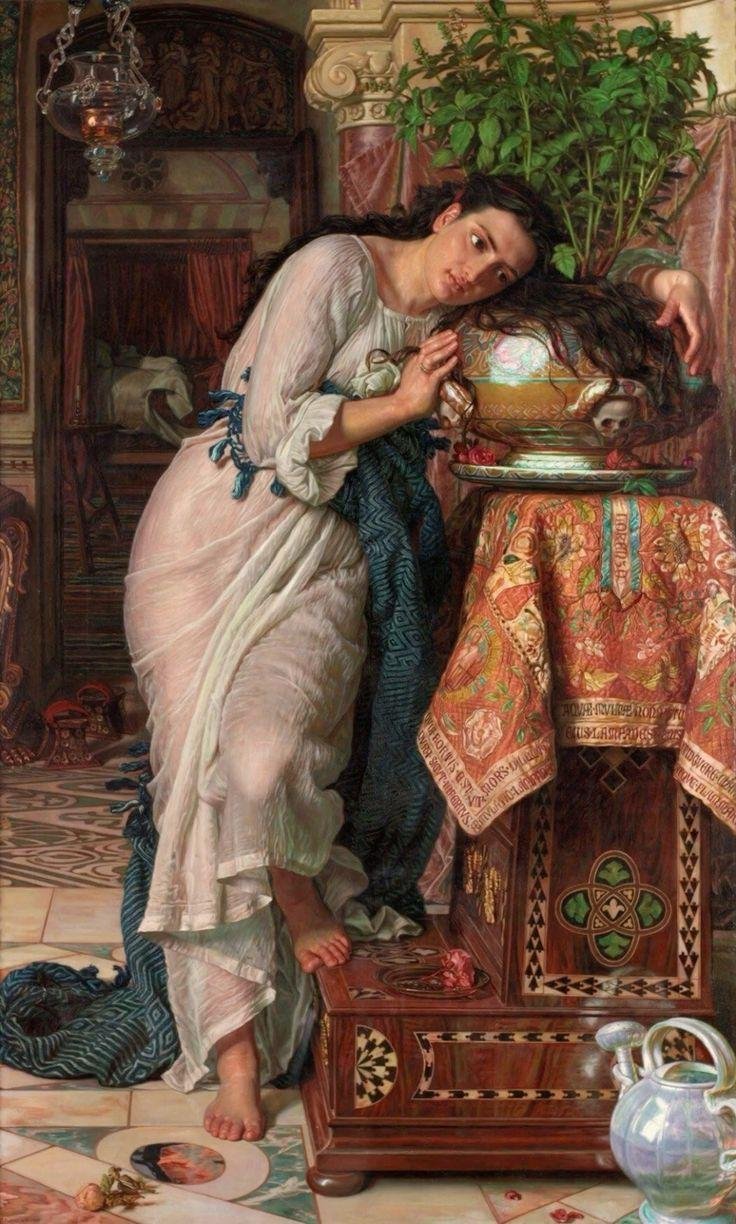THE PARADOX OF PIETY: A TALE OF DECEPTION

FIRST DAY, FIRST STORY
INTRODUCTION
Panfilo’s mention of the temporary nature of things on earth recalls the plague and its graphic reminder that human life is fleeting. The framework of his story draws on the Roman Catholic conception of saints, miracles, and intercession. Saints are people who lived particularly holy lives, are thought to have gone to heaven after death, and are believed to have the power to intercede with God—in other words, to ask for things on behalf of the living. Their special heavenly status is often proved through working miracles on earth.
SUMMARY
Cepparello is an evil man—he cheats, lies, kills, blasphemes, and expresses no remorse over these things. He gladly takes the job and travels to Burgundy. Against his evil nature, he begins his duties in a pleasant manner, but soon falls ill while staying in the house of two brothers from Florence. The brothers discover what kind of man Cepparello really is and debate what to do with him. Cepparello asks them to fetch the holiest priest they know of, and says he will take care of the rest. The brothers find a monastery and bring back a friar to hear the man's confession. Cepparello lies to the friar about everything, convincing the man he is all but a saint. The brothers cannot believe Cepparello's audacity. Cepparello dies and is buried at the monastery. The friar who heard his confession and believed everything he said gives such an impassioned sermon over his goodness and sanctity that soon Cepparello is considered a saint throughout the countryside.
ANALYSIS
The first day, first story shows that Boccaccio's stories are rooted in the here and now, with a focus on earthly pursuits and passions. He documents the foibles and failures of the human condition, the everyday lives of the lords and friars and merchants and painters and poor folk. They are not waiting to die to gain their heavenly reward, rather, they are pursuing their earthly rewards while they are still alive. Compassion and humanity are lauded in Boccaccio's stories rather than piety. The human condition is of far more interest to Boccaccio than the divine, and is further worth pursuing.
The opening story is the first of many stories in The Decameron that poke fun at religion. Cepparello is a terrible man who delights in doing evil things, and yet he is able to con a clergyman into believing he is of such purity and goodwill he should be considered for sainthood. In the medieval period it was a common trope to have caricatures of priests, friars, and monks. Usually they were portrayed as greedy or lecherous, but there were also instances where the clergy were easily duped.
This story is the case of the latter. The friar in the story is a true holy man and believes the best in what Cepparello says. It is this naïveté that allows Cepparello to trick him so completely. The story also shows the willingness of people to believe the things a priest or religious leader tells them. The fact a man of Cepparello's wickedness could be hailed as a saint by a churchman who barely knew him is also part of the joke.
However, this introduces an important theme Boccaccio revisits again and again throughout The Decameron. The power of faith and belief is addressed. While Cepparello may have been a horrible person in life, the people's belief in him as a saint and the friar's faith in him elevate him in death. It doesn't matter he was terrible, the people do not believe it of him. There is power in faith that elevates the mundane to the miraculous. In the end it doesn't matter Cepparello was not a saint. It is enough the people believe he was.
PERSONAL RESPONSE
The first day in The Decameron made me think about how easily we accept things, how we always embrace and accept what we’ve heard first, especially when the people we listen to speaks like they know what we already want to believe. The friar’s unquestioning faith, his eagerness to accept Cepparello's deceptive lies without a second thought. It’s a reflection how we are easily get deceive by the looks or the person’s physical appearance, like how Cepparello’s lies about his personality making people believe to what he only said. This serves as a reminder that people may not always be seem, and one should be cautious in forming judgements based on appearances. We often believe by what we heard or see first without looking for what is real and what cause an action to lead to a specific effect. It depicts how reputations and societal judgements can overshadow the real intention and the real color behind them. Trust is a big word, and it is upon us on how we believe things on our own way.
CONCLUSION
The story concludes with a poignant reminder that human beings are often swayed by superficial impressions and narratives, highlighting a broader critique of blind faith and the susceptibility to manipulation. It leaves the reader reflecting on the complexities of human nature, the ease with which truth can be obscured, and the importance of critical thinking in discerning authenticity from facade. Pampinea's tale of Cepparello serves as a powerful and unsettling opening to The Decameron. It's not merely a humorous anecdote, it is a sharp critique of societal hypocrisy, the deceptive nature of appearances, and the power of narrative to shape perceptions. Cepparello, despite living a life filled with sin, is ultimately revered and canonized due to the false narrative constructed around his death. This reveals the irony and absurdity of societal and religious judgment, where external appearances can overshadow genuine morality. In essence, the tale encapsulates the idea that virtue cannot be measured solely by reputation or outward behavior. It challenges us to consider the significance of integrity and the potential consequences of accepting things at face value, urging a deeper exploration of what it truly means to be virtuous in a world filled with deception.
#TheDecameron #Boccaccio #MedevalLiterature #LiteraryReview






